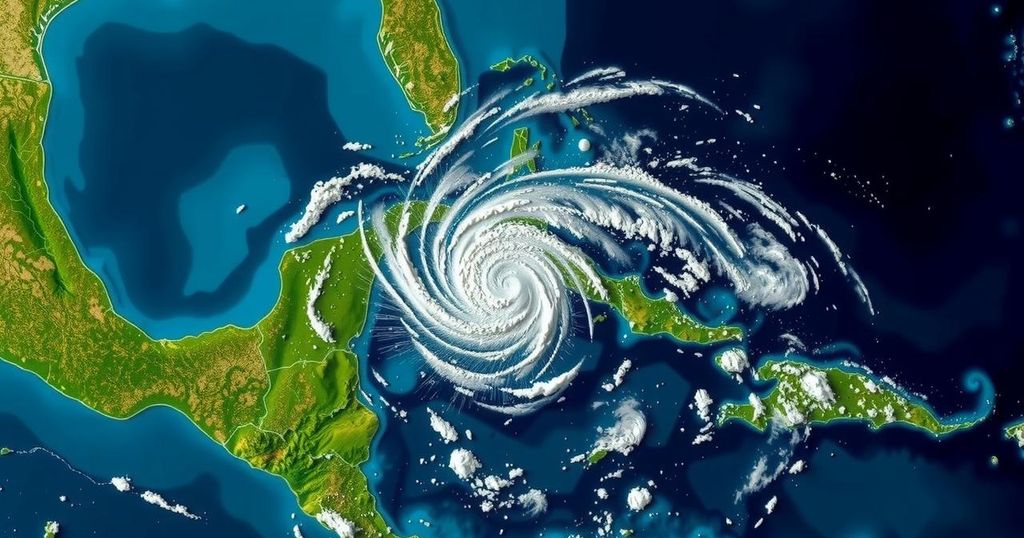Hurricane Rafael, currently a Category 2 storm, is moving west across the Gulf of Mexico and may weaken to a tropical storm by Sunday. It made landfall in Cuba as a Category 3 hurricane, damaging the electrical grid. Surf and rip current warnings are in effect for Gulf regions, while the potential formation of new tropical disturbances remains low.
Hurricane Rafael has transitioned into a Category 2 storm and is anticipated to proceed westward across the Gulf of Mexico over the coming days. The storm faces less favorable conditions compared to the Caribbean, with significant wind shear, dry air, and cooler water temperatures potentially diminishing its strength. The National Hurricane Center forecasts that Rafael may downgrade to a tropical storm as it approaches Mexico by Sunday. As of Thursday morning’s update at 7 a.m., the tropical storm warning for the Dry Tortugas has been lifted, and no other warnings or watches are currently in effect. Meteorologists warn that the hurricane may produce dangerous surf and rip current conditions throughout the Gulf, posing risks to coastal areas. Earlier this week, Hurricane Rafael made landfall in western Cuba as a Category 3 hurricane, severely affecting the country’s fragile electrical infrastructure for the second time this season. This unfortunate occurrence follows Hurricane Oscar’s impact in October, which resulted in eight fatalities and significant damage to approximately 20,000 homes on the island. The National Hurricane Center has also provided an update regarding potential new disturbances, indicating that the chances of a tropical system forming north of Puerto Rico and Haiti have been reduced, now assessed at a 20% likelihood of developing into a tropical depression in the upcoming days. Following Rafael, the next name on the Atlantic hurricane list is Sara.
The article highlights the trajectory and current status of Hurricane Rafael, emphasizing its impact on Cuba and potential future developments as it moves across the Gulf of Mexico. It underscores the storm’s recent landfall as a Category 3 hurricane, its severe consequences for Cuba’s electrical grid, and the ongoing concerns regarding sea conditions in the Gulf. Additionally, it mentions the status of other potential tropical disturbances, reflecting the dynamic nature of hurricane forecasting.
In summary, Hurricane Rafael is projected to weaken as it traverses the Gulf of Mexico, with forecasters indicating possible downgrades to a tropical storm by the time it reaches Mexico. The storm’s prior impact on Cuba underscores the vulnerability of infrastructure in the region, raising concerns about further adverse weather, including dangerous surf conditions in the Gulf. The monitoring of new disturbances reminds us of the unpredictable nature of hurricane season.
Original Source: www.miamiherald.com






